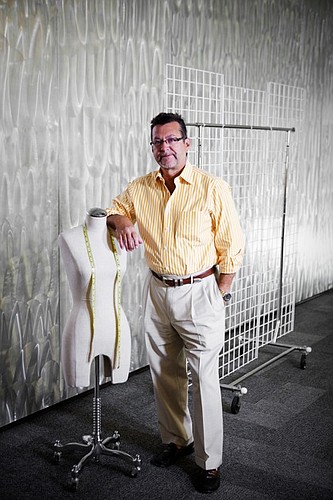REVIEW SUMMARY
Company. Chico's FAS
Industry. Retailing
Key. Keep expenses in check with sales growth.
When Kent Kleeberger joined Chico's FAS in November 2007 as chief financial officer, the Fort Myers-based women's retailer was about to face its most tumultuous year. Indeed, in 2008 the company lost $19 million and the board replaced CEO Scott Edmonds with veteran retailer David Dyer.
Together, Dyer and Kleeberger turned the company around by cutting expenses, boosting investment in merchandise and pushing online sales. Net income last year totaled $115 million on sales of $1.9 billion, a 64% increase in profit compared with 2009.
What's more, Chico's balance sheet is one of the most enviable in the retail business. The company has no debt and $549 million in cash and securities.
The stock price, which during the boom traded in the $40 range, fell to below $2 per share in late 2008. But it recently traded around $15 a share and now pays a dividend.
Kleeberger, 58, is a retailing veteran. Prior to joining Chico's, he was senior vice president and chief financial officer for Dollar Tree stores. Before that, he served in various senior finance positions with The Limited and The Limited Too.
Chico's operates a vast network of 1,158 stores in 48 states, the District of Columbia, the U.S. Virgin Islands and Puerto Rico. More than half of those stores are the Chico's flagship brand and the rest are White House | Black Market and Soma Intimates.
Of the three brands, Dyer and Kleeberger say Soma presents some of the biggest growth opportunities for the company, positioning itself as the Victoria's Secret for women in the 35-to-65 age bracket.
Kleeberger, who was recently promoted to executive vice president and chief operating officer, recently discussed the opportunities and challenges that lie ahead for the company. The interview was edited for style and clarity.
What were the major initiatives that turned Chico's FAS around?
One of the reasons I took the job is because Chico's was encountering a similar situation that I was exposed to in the past: a voracious appetite for real estate, and building too many stores too quickly. In fact, the stores got too large. That was coupled with significant increase in overhead.
In the three years leading up to 2009, there was a compound annual sales growth of about 3% per year, but SG&A and head count grew at 15% annual compounded growth rate, so that spelled disaster. We needed to slow the growth rate down and we had to unfortunately let some people go and cut expenses significantly.
It's also interesting to note that even when the business is encountering rough seas and comparable-store sales decline, we had small pockets of opportunities. It's just that we were dug so far into our foxhole we were afraid to take any risk from a merchandising perspective. Soon after Dave [Dyer] came onboard, we brought in Verna Gibson, who was one of the original board members and whom I knew at The Limited.
When Verna came onboard, she made an assessment and identified opportunities, so we stepped up our investment and we started to see some payback. That was probably about when it started feeling like there was light at the end of the tunnel.
The company has plenty of cash and no debt. Why so conservative?
In our business, since I think there's a lot of growth left, the best return on our cash is to invest in new stores. But I don't want to repeat the mistakes of the past where we're growing real estate too quickly because you end up playing into the real estate developer's hands, and you don't get great locations or great economics. So we want to be conservative. Last year we initiated our first quarterly dividend. We just raised it in March. We announced a $200 million share repurchase last year.
Some people would argue that dividend is the least tax-efficient way to provide shareholder return, and it suggests you don't have better use for cash.
I think dividends are becoming more popular these days. When I went back and did the research, there weren't a significant number of specialty retailers that paid a dividend. But I think you have to take a look at it in terms of total shareholder return. There are probably a number of institutional investors that won't own stocks that don't pay a dividend, so it makes us available to them. I'd like to think that after doing some comparisons with best of breed under the retail umbrella, paying a dividend made sense.
We have a five-year plan and we have some very great targets from both the sales and profitability standpoints. We believe this plan is achievable without having to do an acquisition. But we've made no bones about it that if something came along that fit our core competencies, we would definitely do an acquisition.
What would an acquisition look like?
You want to have a great concept with plenty of growth in women's apparel, and you have to have a great management team. I don't think we're interested in being distracted by fixing a broken business.
You've talked about Soma's being a big opportunity for growth, but that brand hasn't been profitable since it started in 2004. What's so hard about selling panties and bras?
We've done just about everything we could to screw up the business. We gave them disparate locations when we started opening stores. It's very tough to leverage both your field management team and your marketing when you have disparate locations across the country. In addition to that we probably laid on too much infrastructure from the get go. They weren't as lean as they should have been. They were the first business to bring on SAP [enterprise software], which almost brought them to their knees. It was expensive and complicated.
And then over the course of time we've gone through four image-marketing changes. I think we kept avoiding the “sexy” word because we didn't want to be like Victoria's Secret. There's nothing wrong with being sexy-sensual; it's not sexy-trashy. And so I think the marketing imagery has vastly improved in the last year or so because this woman wants to feel sexy, not trashy. We've had some wonderful great product introductions over the course of the last two-and-a-half years, like vanishing panties and now vanishing back bras, which are selling like hot cakes. I think that's the evolution of why Soma took too long.
The prior management team set unrealistic expectations when the company would grow and turn a profit. We always felt there was a leveraging point where we would have at least 125 or 150 stores and the direct-to-consumer business. We think we were getting close to the tipping point, so we accelerated the store growth last year. So what that gives you is purchasing volume and it drives down costs and helps improve your margins.
Take a look at Victoria's Secret. They service women 15 to 35. That's 42 million women. Chico's is seeing women 35 to 65. That's 62 million women. It has roughly the potential to be 1.5 times Victoria's Secret. But the rub is that when this woman graduates from Victoria's Secret she goes to the department store. And absent Nordstrom, we know what lousy service department stores have. But the issue is that in that time frame she's developed a loyalty to a particular brand. That's very hard to overcome. That's probably the biggest obstacle we've had in trying to grow Soma. But we've got great products and when we started doing more television advertising we really began to see a boost in the business.
Your customer loyalty is legendary, but they're addicted to coupons and discounts. How do you wean them?
Unfortunately, that's the case. I've been like a dog with a bone with this whole couponing because last year we reached a peak of $272 million in coupon discounts. That's up almost $100 million since fiscal 2007. But if you look at the number of transactions that have coupons, they only grew 8%. So that tells me the richness of the offer is where we had to attack. Coupons are important to all of our customers. If you look at the Chico's business, half of the transactions have a coupon. You can't eliminate them. But what you can do is you can reduce the richness of the offer.
With the Chico's brand you're pushing into smaller markets. How's that working?
What happened was Dave and I made some store trips and the one thing that really hit home for us was in Texas last year. We went to places like Lubbock, Amarillo, Waco, Midland and we have these destination stores there.
Some of these stores do $2 to $2.5 million in sales volume and we call their profitability “four-wall contributions,” as much as 40%. That's $1 million of profit. So we started taking a look at these markets and asking what are the characteristics that make these unique? Our research team has identified potentially an additional 75 more stores for Chico's. If Chico's knocks the cover off the ball there, we can put a White House | Black Market there and in some cases we could put a Soma's there.
What are the characteristics of these smaller markets? Low rents?
Low rent is one of those unique characteristics. I can often take a look at my four-wall report and when I see a store that has a 35% or 40% four-wall contribution, I'll immediately go to the occupancy section and it'll show me that it's single digits as a percentage of sales. We're reluctant to give people what the secret sauce is, but it has a lot to do with the demographics.
Your online direct-to-consumer business has experienced tremendous growth lately. How do you keep that from cannibalizing your brick-and-mortar stores and pressuring margins?
You have to peel back the onion a little bit. We sell full-price product just like we do in our stores. But sometimes we do promotional activity on the Web, which lowers your margins a little bit but does generate sales. Lastly, we are doing clearance on the Web. If you were to combine the front-line stores with the outlets and have a blended margin, that's sort of what the direct-to-consumer business looks like.
Are you planning any international expansion?
We're still in the turnaround because we're not back to that magic $1 per share where we were in 2005 and 2006, so I don't want to get distracted with another dimension. But certainly international is an opportunity. We're beginning to have discussions around that.
How's your outlet-store strategy working?
It's working great. When I got here in 2007 the outlets lost money because they were being used predominantly for clearance. Then Chico's started making product specifically for outlet. Over the course of time, that penetration of made-for-outlet product climbed from 20% to almost 100% this year.
In the 2009 versus 2008 time frame, the Chico's outlets went from losing $12 million to making $12 million, so we have another business there. And the beauty of having made-for-outlet product is that we don't have room for clearance. It forces the front-line stores to both trim the size of their buy and liquidate that product in the stores or on the Web.
How are you diversifying where you buy your goods?
In our 10-K this year, we ended up with 63% of our product sourced from China. That's down from 67%. That's still an inordinate amount.
Why so much from China?
I think it's just over time we've built such a huge production base in China. Now the issue is that they're having increases in labor, roughly in the low teens, so we have to begin migrating out of China. So we've established a target of 40% within the next two years. The Chico's brand is already at 45%. There are areas of the Far East that some of us in other companies have been sourcing for many years. For example, we just started sourcing out of Vietnam last year in casual bottoms for the Chico's brand. When I was with Limited Too, we were in Vietnam in 2001.
So is Vietnamese labor a lot less expensive than China?
Yes, but it's not exactly a two-for-one tradeoff. The Chinese people have huge productivity edge over other countries. So while the cost per labor hour will come down, some of those savings get eaten up because they're not as productive as some of the people in China. We've sourced in India, but it so happens our sourcing was in Delhi. But there are areas like Bangalore and Chennai that people have been sourcing for years, so we're going to go there. Our biggest bra manufacturer is in Sri Lanka, so we'll be exploring that.
What about inflation of commodity prices?
I don't think we're as dependent on cotton. We have a lot of different fabrics throughout the two apparel brands. While it impacts us particularly in the denim arena and some of our basic tops, we're probably not as significantly impacted as other retailers.
That's not to say there's not some inflationary pressure on synthetic fibers, particularly petroleum based. But what we're doing in consolidating our vendor base and being important to a few instead of scattered is one of the ways you can help price. We've been taking positions in piece goods and yarns as much as nine months in advance to avoid inflationary pressures there. In a very few cases we've had to make some advances to factories so they can procure the fabric. Of course they're backed up by letters of credit in case they default. I don't like to advance cash, but sometimes you do it.
You said you might source in the U.S.?
Yes, potentially in the Western Hemisphere. When I was with Victoria's Secret, on the catalog side, we did a lot of apparel out in L.A.
Is there an apparel industry left in the U.S.?
Sure there is. If prices keep going up, it's going to become more and more attractive. It's not a huge amount of capacity, but there are still opportunities in pockets.
What's your management style and how do you manage a sprawling company with more than 1,000 stores?
I think you have to delegate. Businesses succeed because of the strength of the team. And so you have to work through people. You need to be connected. It's one thing to communicate, but to actually connect with people is how you get things done. And you have to develop people too. Give them the tools so they can take over the reins and champion the cause.
How do you view being headquartered in Fort Myers, especially in terms of recruiting talent, as opposed to New York or another fashion center?
From a recruitment standpoint, a couple of people in the merchandising area would have you believe it's tough to recruit people, particularly in the fashion industry, because New York is the fashion capital. I, on the other hand, think that if you look at the number of people we've brought into the business in the last couple years, I don't think it's a handicap. I actually think it's a great place, especially for people who are more senior. We seem to get quite a few young people from all over the country. In fact we have this new-hire roundtable lunch. I've probably had a dozen of them since I've been here, and I'm always amazed at the number of young people who come here. We had people last week who came from San Francisco and New York because they remembered vacationing here when they were kids.
Chico's dominated the Fort Myers charitable landscape during the boom. What are the prospects for future contributions to local causes?
Even when we were getting our financial house in order, we were still making donations, just not as much. Our perspective is we needed to be more strategic about what charitable organizations we sponsored.
We've been doing a lot of great work with Living Beyond Breast Cancer. They're women-related or children-related causes. We're great sponsors of the American Heart Association, St. Jude's Children Hospital. We've been making some donations to some of the colleges and universities. We made a big donation to Florida Gulf Coast University.






